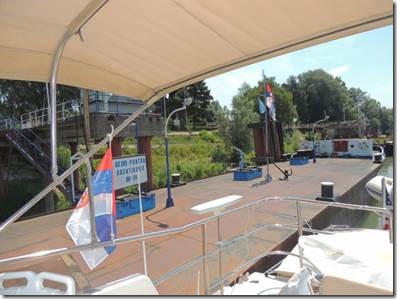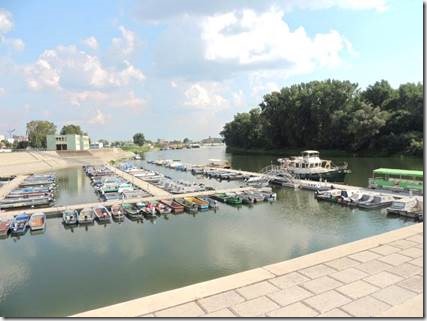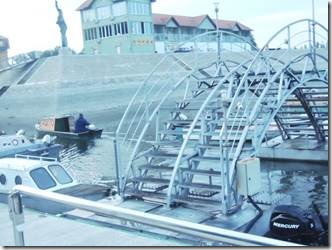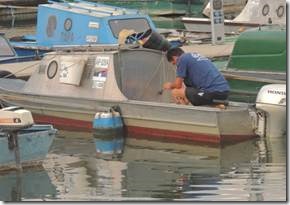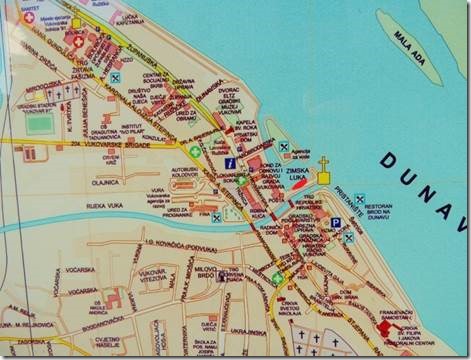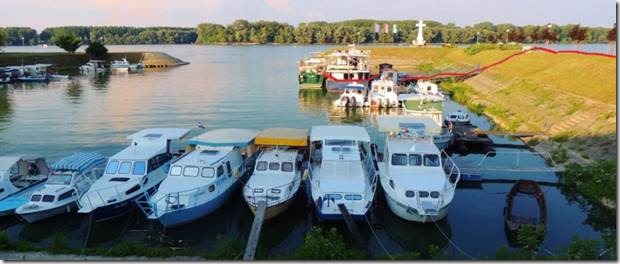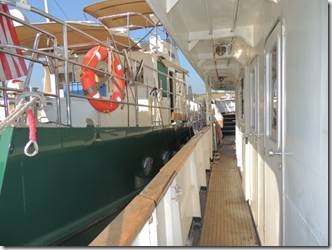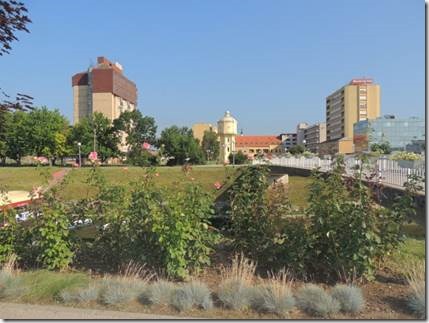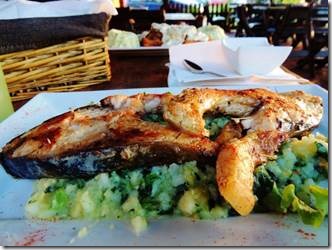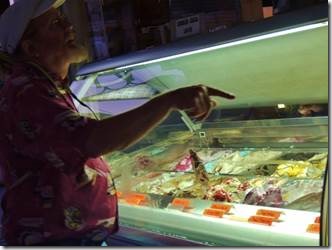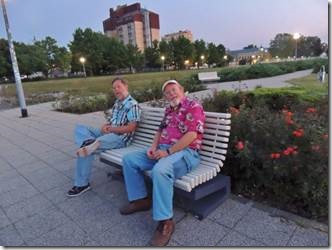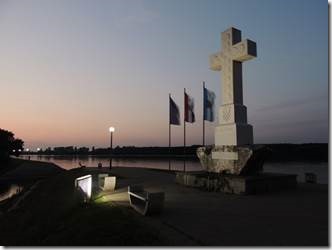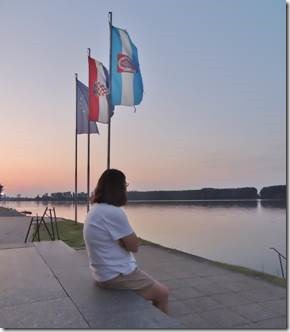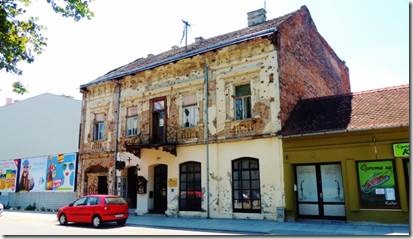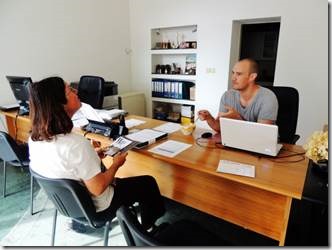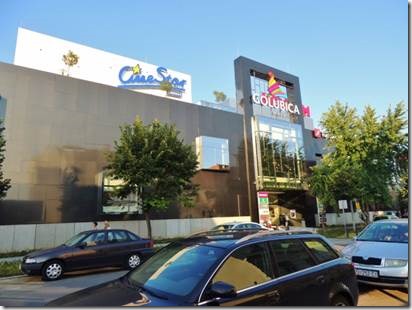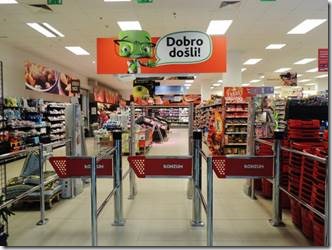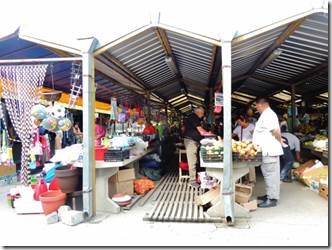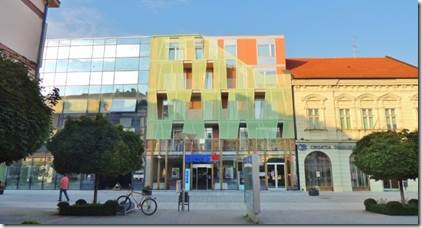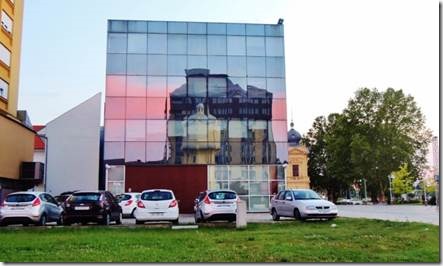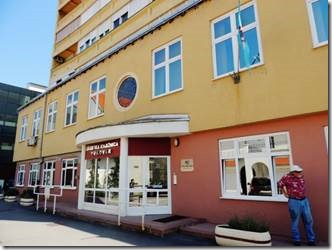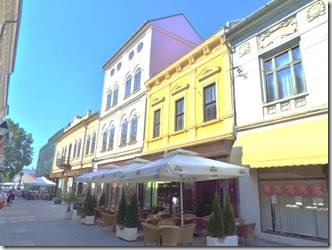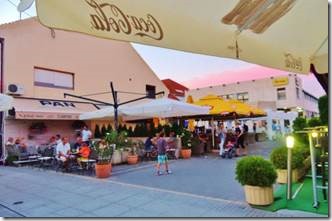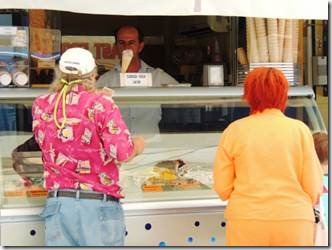Restoran Vodencia
Belgrade, Serbia
добро јутро dobro jutro = good morning
We’ve had a really great stay in Belgrade. The Restoran Vodencia located on the Sava River (just off the Danube) is at the foot of the huge fortress at the end of the town center so a great location. The weather was perfect. We went on two really good walking tours so in 5 hours learned lots of basic history of the city and Serbia in general. Today we’ll continue down the Danube about 50 kilometers before we stop for the night. Not sure the wifi we’ll find there, but so far Serbia wifi is better than most.
This email is part one of our visit two night stay in Croatia.
Ru
Yugoslavia
At this point in time I know which countries made up Czechoslovakia and which countries made up Yugoslavia. That’s more than I knew before we started this trip, though I just had to ask Rick if we had visited The Czech Republic. We had, but just for a minute when we were up in the Bavarian Forest which shares a border between Germany and The Czech Republic. (We did visit Slovakia.) Since leaving Budapest we have visited Croatia and Serbia with their sad history. Where the breakup of Czechoslovakia was called “The Velvet Divorce” being bloodless; the break-up of Yugoslavia was sad and bloody.
http://www.bbc.com/news/world-europe-22316083 April 2013 How Croatia and Serbia buried the hatchet tells more about the current tensions between the two cultures even within the country of Croatia.
|
Balkans war: a brief guide…. The former Yugoslavia was a Socialist state created after German occupation in World War II and a bitter civil war. A federation of six republics, it brought together Serbs, Croats, Bosnian Muslims, Albanians, Slovenes and others under a comparatively relaxed communist regime. Tensions between these groups were successfully suppressed under the leadership of President Tito. http://www.bbc.com/news/world-europe-17632399 tells more Tito as unifier of Yugoslavia is one of the author’s main themes. The Communist Party came to power in Yugoslavia at the end of World War II after its Partisan army fought not only German, Italian, and other occupiers but also fellow Yugoslavs in rival, often quisling, military units. The Partisans were a multinational group (although Serbs predominated in the first half of the war), as was the Communist Party. They advocated national equality and a federal Yugoslavia in their propaganda. This helped them win the civil war since their opponents were mostly nationalists who had followings only inside their own national groups and whose extremism alienated large segments of the population. http://www.foreignaffairs.com/ What is the former Yugoslavia ? What is meant by the term former Yugoslavia is the territory that was up to 25 June 1991 known as The Socialist Federal Republic of Yugoslavia (SFRY). Specifically, the six republics that made up the federation – Bosnia and Herzegovina, Croatia, Macedonia, Montenegro, Serbia (including the regions of Kosovo and Vojvodina) and Slovenia. On 25 June 1991, the declarations of independence of Slovenia and Croatia effectively ended SFRY’s existence. By April 1992, the further declarations of independence by two other republics, Macedonia, as well as Bosnia and Herzegovina, left only Serbia and Montenegro within the Federation. These two remaining republics declared the Federal Republic of Yugoslavia (FRY) on 27 April 1992. In 2003, the Federal Republic of Yugoslavia was reconstituted and re-named as a State Union of Serbia and Montenegro. This union effectively ended following Montenegro’s formal declaration of independence on 3 June 2006 and Serbia’s on 5 June 2006. http://www.icty.org/sid/321 The International Criminal Tribunal for the former Yugoslavia (ICTY) is a United Nations court of law dealing with war crimes that took place during the conflicts in the Balkans in the 1990’s. The Tribunal was given authority to prosecute persons responsible for specific crimes committed since January 1991 in the territory of what is referred to as the former Yugoslavia. |
|
We checked out of Hungary and Schengen and entered Serbia which is neither part of Schengen or even the EU so technically we could stay here 6 months, same as England. |
|
DoraMac parked at Apatin Marina, our first stop in Serbia. Lots of small fishing boats filled the marina. One man came to visit and Randal gave him a tour as they both speak “boat.” The marina staff were helpful and friendly and there was free wifi as well as dock power and water. The town was pleasant but we just walked for groceries and a quick, not great pizza. We set off the next morning down river to Vukovar, Croatia where Randal wanted to investigate the boat paint options. |
|
Croatia’s declaration of independence in 1991 was followed by four years of war and the best part of a decade of authoritarian nationalism under President Franjo Tudjman. By early 2003 it had made enough progress in shaking off the legacy of those years to apply for EU membership, becoming the second former Yugoslav republic after Slovenia to do so. (Joined EU 2013) A country of striking natural beauty with a stunning Adriatic coastline, Croatia is again very popular as a tourist destination. http://news.bbc.co.uk/2/hi/europe/country_profiles/1097128.stm |
|
Vukovar where we stayed for 2 nights The orange blob near the cross monument is DoraMac From DoraMac onto the barge onto the dock onto the finger piece of land and then into town as the red line shows. We tied up alongside a barge tied to a dock because that’s the only place we would fit. We were able to get power and water. Note the white cross to match up with the town map. So you climb out of DoraMac and onto the deck of the barge, around the back and then onto the walkway to shore. |
|
Just across from DoraMac to our right (if you are standing on the boat facing the bow.) |
|
After a wonderful dinner our first night (when we finally found the restaurant) and some ice cream from a town vendor for Randal, we walked out to the point where the cross monument is located. Grilled fish on a medley of roughly mashed potato mixed with swiss chard. A very garlicy/parlsey oil was served with it. I went a bit overboard with the oil but it was great. Randal had chosen a simple chicken caesar salad so had room for a small cone from one of the many ice cream vendors in town. The cross is a sad memorial to the war with Serbia “A cross near the Danube river, a gift from the Croats from Istria, with inscription "Forever lives who dies honorably", carved in the Glagolitic script.” http://www.croatia.org/crown/articles/9280/1/Vukovar-Croatian-Baroque-city-on-the-Danube-river.html |
|
Bullet holes “decorate” the Tourist Office Building on the main street Mary and I went early Saturday morning and Thomas was really helpful with maps, brochures and suggestions. |
|
The town center was a mix of new malls, hotels, and banks on the main street built on the Danube saide and the open air market one street back into town. Modern well-stocked supermarket Traditional outdoor market selling this, that, clothes, fruit and veggies More shops, banks and hotels Not sure what this building is but the reflections at night were lovely and the library is just behind to the left. Public Library had a cute area for kids downstairs and the adult section up, but no photos and we only stopped for a minute. |
|
Lots of outdoor café seating Randal’s favorite ice cream place. Very popular shade of red hair you see everywhere in Europe. |

